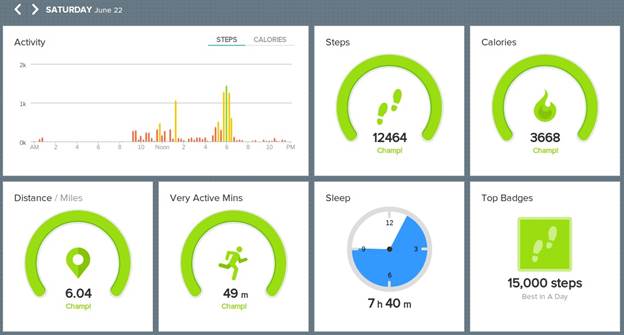Indeed, it puts it a country mile ahead of
the other diet-tracking app that I used for this experiment: the swish-looking
Health & Fitness app built into Windows 8.1. Its food database is shallower
than Piers Morgan: it’s never heard of Wetherspoons and lacks an entry for
roast lamb with trimmings. If you eat something it doesn’t recognise, you have
to enter it manually – somehow discerning the calorie, fat and protein count of
a ham and pickle sandwich for yourself - or find the nearest equivalent.
Consequently, despite entering the same food diary into both apps, they often
disagreed wildly on the number of calories I’ve consumed, sometimes by
thousands of calories a day, although my instinct was to trust the more
comprehensive database of the former.

This
is a Wetherspoons in Llandudno in North Wales.
It is the Wetherspoons which was once a cinema.
Both apps set you a daily calorie target,
based on your current weight and how much you want to lose, and deduct any food
you consume from that daily target - leading to some pretty grim scenarios come
evening time, when you realise that club sandwich at lunch means you’re now
faced with the unenviable choice of either chewing nothing more calorific than
your fingernails or sailing past your daily target. You can see how people
might be tempted to skip meals.
MyFitnessPal pulls ahead again with its
fitness app integration. If you connect MyFitnessPal to an exercise monitor,
such as Fitbit, it’s possible to get more calorie credits in the bank. Walking
eight miles around London one day was enough to earn me back 1,081 calories,
cancelling out the six pints (hic) of Guinness I used to slake my thirst on the
walk/pub crawl. MyFitnessPal even uses real-time data from Fitbit to predict
how many calories you might claw back by the end of the day, so you can see
whether you’re likely to have enough credit left to justify dessert, for
example.

And
is it really possible to boost your metabolism by increasing simple daily
activity?
Clever as it is, I’d suggest that feature
isn’t always productive: I rewarded myself with a calorie-laden treat after
exercise far more often than I went for a jog round the block to wipe out a
surplus in the calorie column.
Exercise
There are plenty of smartphone apps for
tracking short bursts of exercise, but if you want something to monitor every
step you take, it’s unwise to rely on a smartphone alone. While there are
pedometer apps, such as Runtastic, that will continually record your footfall,
they’ll drain your battery (albeit modestly) while doing so. For women, who
don’t tend to carry phones in trouser pockets like us chaps, you’re going to
miss half the steps you take. You’ll be shocked how many miles you clock up
just walking around the office.
To measure my daily activity, I opted for
the Fitbit Flex. This not only measures how many steps you take each day, but your
sleep patterns, too. It comprises a tiny sensor unit that slots into one of two
different-sized rubber wrist straps, which you’re advised to attach to your
“non-dominant” wrist, for reasons that are probably best left unexplained.

The
accompanying app remains the same from previous versions
but the desktop site has been revamped for a more visually stimulating
experience
It comes with a small Bluetooth dongle that
you can plug into your PC to transfer data wirelessly from the device; you can
also download the Fitbit app for iOS or Android, and use your smartphone’s
Bluetooth radio to sync data with the device.
Fitbit records a number of metrics: steps
taken, miles covered, “very active” minutes per day, and calories burned.
It displays this data in dashboards on its
website and smartphone apps, and rewards you with virtual badges if you pass
certain landmarks - 10,000 steps in a day or 50 lifetime miles. If you have
Fitbit-owning friends who have signed in with Facebook, you’re pitted against
them in a rolling weekly league table.